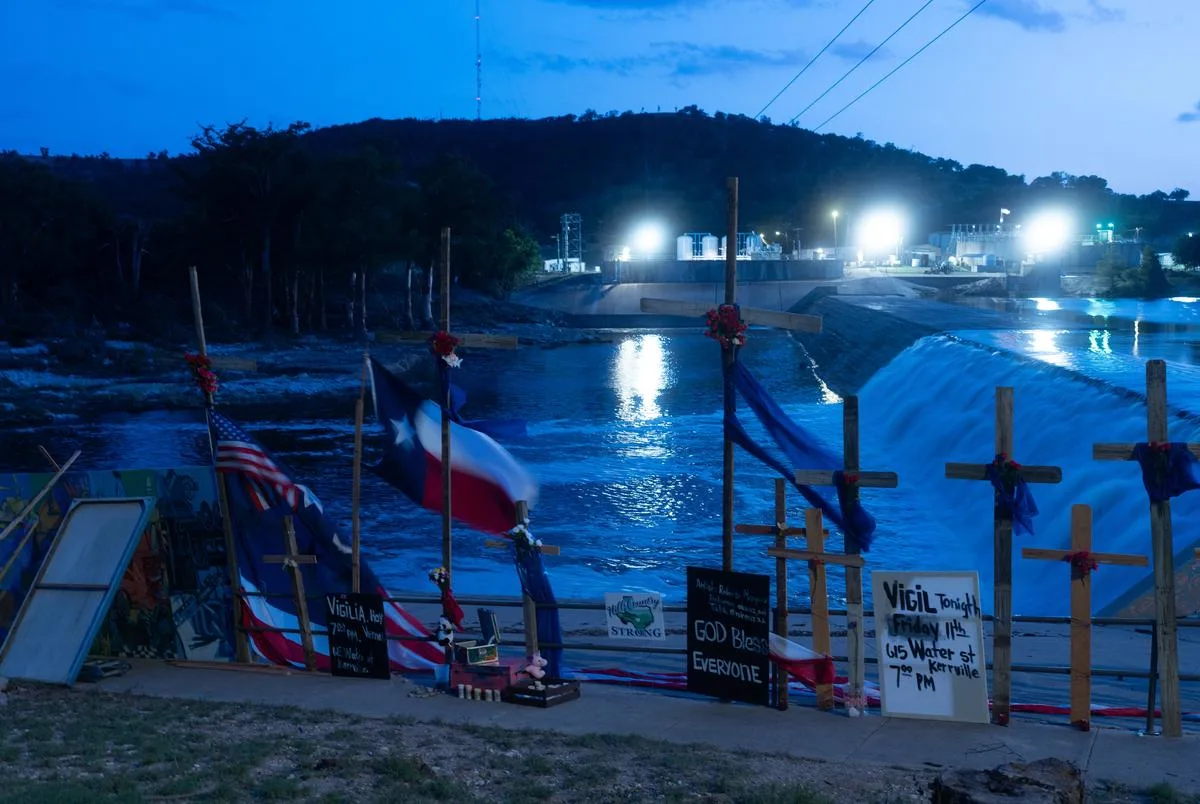Emergency crews in central Texas suspended their search for victims of the catastrophic flooding that struck the region earlier this month, following new warnings of additional heavy rainfall and the potential for further flash floods. The decision to halt search operations was made on Sunday morning, marking the first time that severe weather has paused the search efforts since the initial flooding.
The Ingram Fire Department ordered search crews to evacuate the Guadalupe River corridor in Kerr County, citing a high risk of flash floods. Fire Department spokesman Brian Lochte indicated that search and rescue operations were expected to resume on Monday, depending on river conditions. He mentioned that crews were prepared with airboats and search-and-rescue boats to continue their efforts once conditions permitted.
The flooding, which occurred over the July 4 weekend, was unprecedented in its severity. The Guadalupe River rose 26 feet in just 45 minutes before dawn on July 4, sweeping away homes and vehicles. The rapid and intense nature of the flood caught many residents off guard, especially in Kerr County, which lacked a comprehensive warning system. The sheer volume of rainfall was overwhelming; meteorologist Ryan Maue estimated that the storm released 120 billion gallons of water on Kerr County alone.
The floods have been among the deadliest in U.S. history, with at least 115 people confirmed dead and more than 160 still missing. The number of missing individuals suggests that the full extent of the disaster remains unclear, even five days after the event. The death toll from these floods now stands as the deadliest inland flooding event in the U.S. since 1976, when Colorado’s Big Thompson Canyon flood resulted in 144 fatalities.
Search and rescue teams have been working tirelessly, using helicopters, boats, and drones to locate victims and rescue individuals stranded in trees or isolated by washed-out roads. The Guadalupe River corridor, particularly in Kerr County, is dotted with vacation cabins, youth camps, and campgrounds, including the century-old Camp Mystic. Tragically, at least 27 campers and counselors from Camp Mystic have been confirmed dead, with several others still missing.
The rapid onset of the flood, occurring in the middle of the night, overwhelmed residents and emergency services. The event was far more severe than the 100-year flood event envisioned by the Federal Emergency Management Agency. The lack of a warning system in Kerr County has been a significant factor in the high number of casualties. Despite previous discussions about implementing such a system, concerns about funding and potential disturbances led to its absence.
In response to the disaster, numerous volunteers and specialized teams have arrived to assist with search and recovery efforts. Teams from various states, including Minnesota, Arizona, and Virginia, have deployed personnel and equipment to aid in the operations. However, officials have urged untrained civilians to stay away from active search zones due to safety risks and coordination challenges. The influx of sightseers and unauthorized drones has complicated rescue operations, with one incident involving a private drone illegally entering restricted airspace and colliding with a rescue helicopter, forcing an emergency landing.
As the search and rescue operations continue, officials remain committed to accounting for every missing person. Governor Greg Abbott emphasized the state’s dedication to the recovery efforts, stating, “We will not stop until every missing person is accounted for.” The community continues to grapple with the aftermath of this unprecedented disaster, with ongoing efforts to locate the missing and provide support to the affected families.












Leave a comment